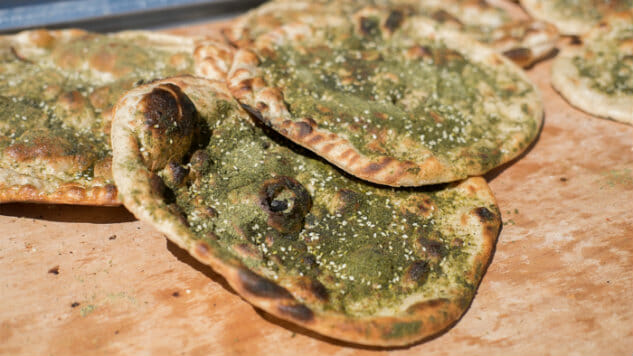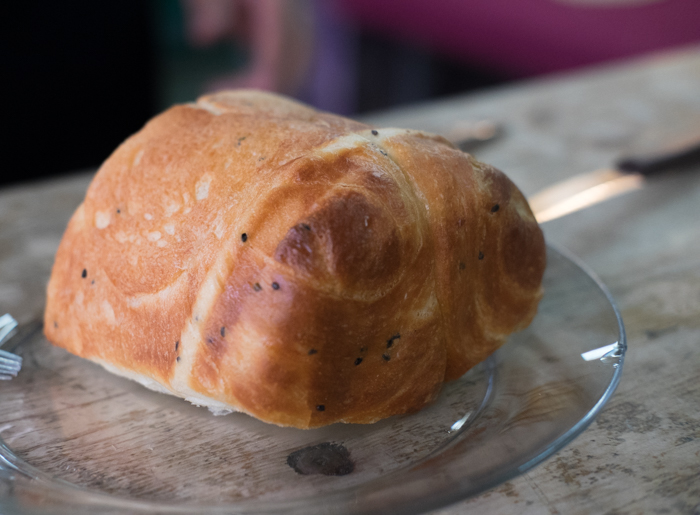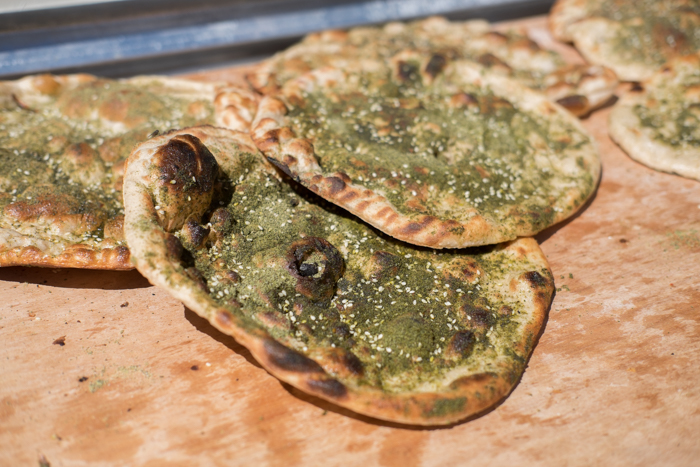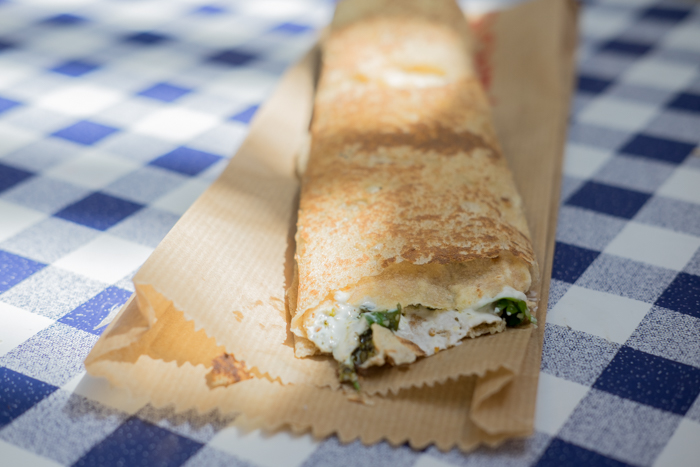Five Israeli Breads You’ve Got to Try
Photos by Naomi Tomky
Sure, you know about pita bread—though it’s fluffier in Israel—and you’ve heard of challah. But those are just the baby steps into the world of Israeli breads. Israeli food comes from all over the world, an amalgam of dishes from both the various cultural traditions that have long resided here and from the wide-ranging backgrounds of the immigrants arriving since the founding of Israel as a nation in 1948. Bread—the stuff of life—shows off that diversity better than anything. If you’re heading to Israel, these five breads will give you a crash course in all things made of dough.
Lachoch

Spotted with holes from fermentation bubbles, this spongy Yemenite flatbread has a touch of tang. If you’ve had Ethiopian injera bread, this might be familiar—it’s similar, though made with wheat flour, rather than teff. The wide bubbles from the fermentation leave the flatbread dotted with nooks and crannies—not unlike a crumpet. It often comes served with Yemenite accoutrements: baked eggs and a hot sauce called zhug, though it can be used to dip in stews or made with an egg on top.
Kubaneh

Another Yemenite bread, this brioche-like loaf comes out of the limitations of religious duty: baking begins on Friday, leaving the bread overnight, so that come Sabbath morning, fresh bread comes out—with no work on the day of rest. The yeasted dough gets rolled in margarine or butter, then baked together in a special pan. The result is not unlike a monkey bread, but in a tall, mushroom shape. An accompanying dip of grated tomatoes cuts the grease a bit.
Non
-

-

-

-

-

-

-

-

-

-

-

-

-

-

-

-

-

-

-

-

-

-

-

-

-

-

-

-

-

-

-

-

-

-

-

-

-

-

-

-











































